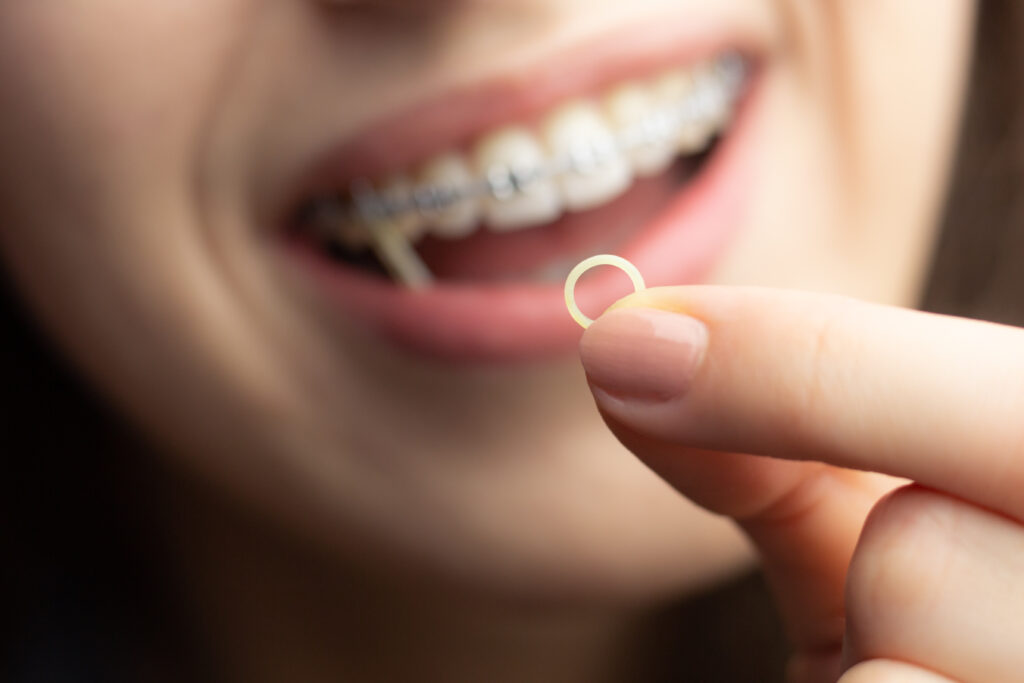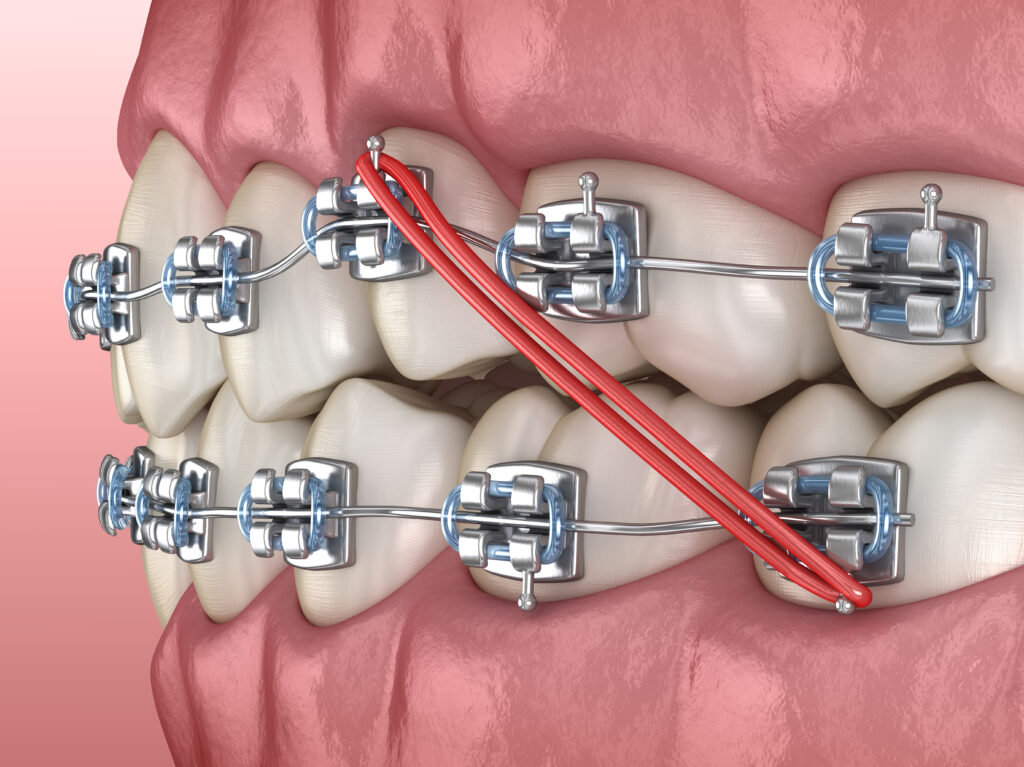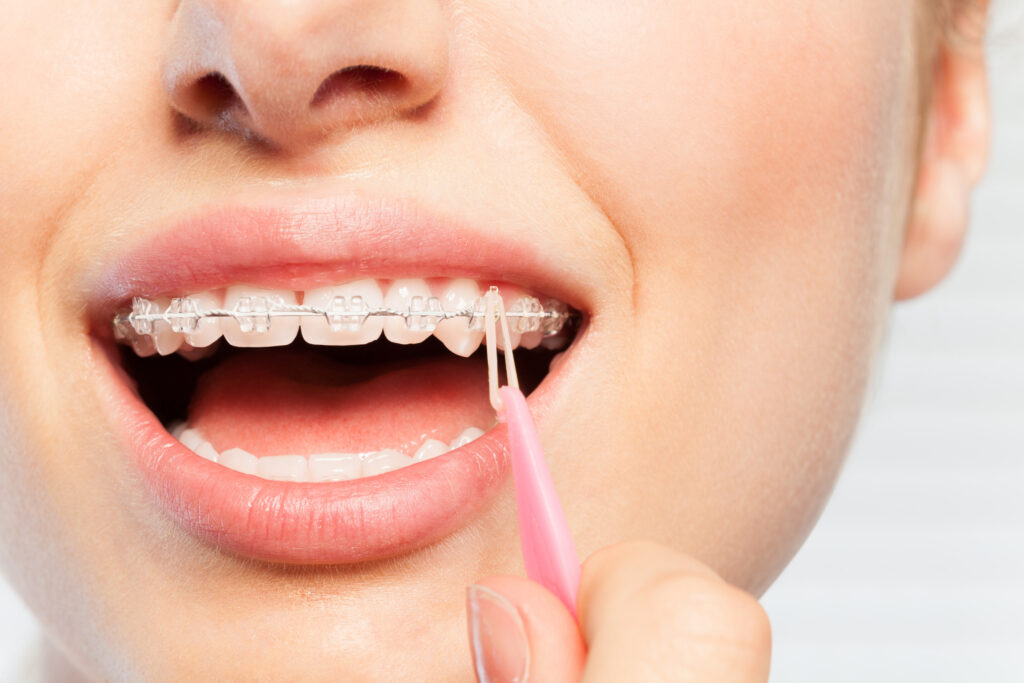Orthodontic Elastics: Your Pathway to Perfect Alignment
Imagine a world where tiny loops of latex hold the power to transform smiles, guiding each tooth to its ideal position. Welcome to the world of orthodontic elastics, often known as rubber bands. These little wonders work alongside braces, adding that extra push needed to conquer even the most stubborn bite issues and misalignments. While braces lay down the tracks, elastics drive the engine, ensuring your journey to a flawless smile stays on course. Is it time for you to hop on board?


Do I Need Elastics?
The most common time that your orthodontist would recommend elastics is if you already have braces or aligners in place and require extra pressure to shift your teeth. Here are some helpful tips:
- Carry extra elastics with you in case one breaks or gets lost.
- If you run out of elastics, don’t wait until your next appointment to get more; stop into your orthodontist’s office right away.
- Remove elastics for eating or brushing your teeth. Then, put fresh ones on after.
- Wash your hands before putting in or taking out elastics.
How Do Elastics Work?
Elastics are tiny rubber bands that apply extra force to a tooth or teeth in ways braces alone cannot. Tiny hooks on selected upper and lower brackets are used as attachment points. The configuration of the elastics can come in a variety of designs, custom-selected for your bite by your orthodontist depending on your specific needs. They may be placed going from teeth in your upper jaw to teeth in your lower jaw or connected to different teeth in the same jaw.
Your orthodontist carefully chooses the connection points based on the desired movement for individual or groups of teeth. Patients are responsible for placing and removing their elastics, and wearing them as your orthodontist prescribes. It’s important not to wear more elastics than prescribed. Doing so places excessive force on the teeth, which can harm your teeth and your jaws or slow down tooth movement. Find the AAO orthodontist nearest you today.

Elastic Care Tips
Orthodontic elastics are pivotal in achieving a balanced bite and aligned smile. Proper care is required to make sure your elastics work efficiently. Here’s a comprehensive guide to ensure you get the most out of your elastics:
Storing Your Elastics
It’s vital to store your orthodontic elastics in a cool and dry environment, well away from direct sunlight. Heat exposure can undermine the elasticity of these bands, making them less effective.
Replacing Your Elastics
Elastics lose elasticity as they age. It’s essential to replace your elastics daily or as often as your orthodontist recommends. Relying on old or over-stretched elastics can slow the alignment process and compromise the overall results.
Keeping Your Elastics Clean
Hygiene plays a pivotal role in orthodontic care. Before you handle your elastics, always make sure your hands are clean. This simple step prevents the introduction of unwanted bacteria into your mouth, which could lead to other health issues.
Also, remember that orthodontic elastics are designed for single use. There’s no need to rinse or wash them. If an elastic falls out or you need to remove it briefly, it’s best practice to use a fresh one upon reapplication.
Beware of Allergies
For many individuals, allergies can be a significant concern. Latex is a common material used in various medical and dental tools, including some orthodontic elastics.
If you have a known sensitivity or allergy to latex, you must communicate this to your orthodontist. Fortunately, with the growing awareness of such allergies, many orthodontists now offer latex-free elastics. These alternatives ensure that your orthodontic journey is effective, safe, and free from allergic reactions.
Frequently Asked Questions
Please browse our list of frequently asked questions about elastics. If you can’t find an answer to your question, contact your AAO orthodontist for the best answer for your specific situation and for any other information you may need.